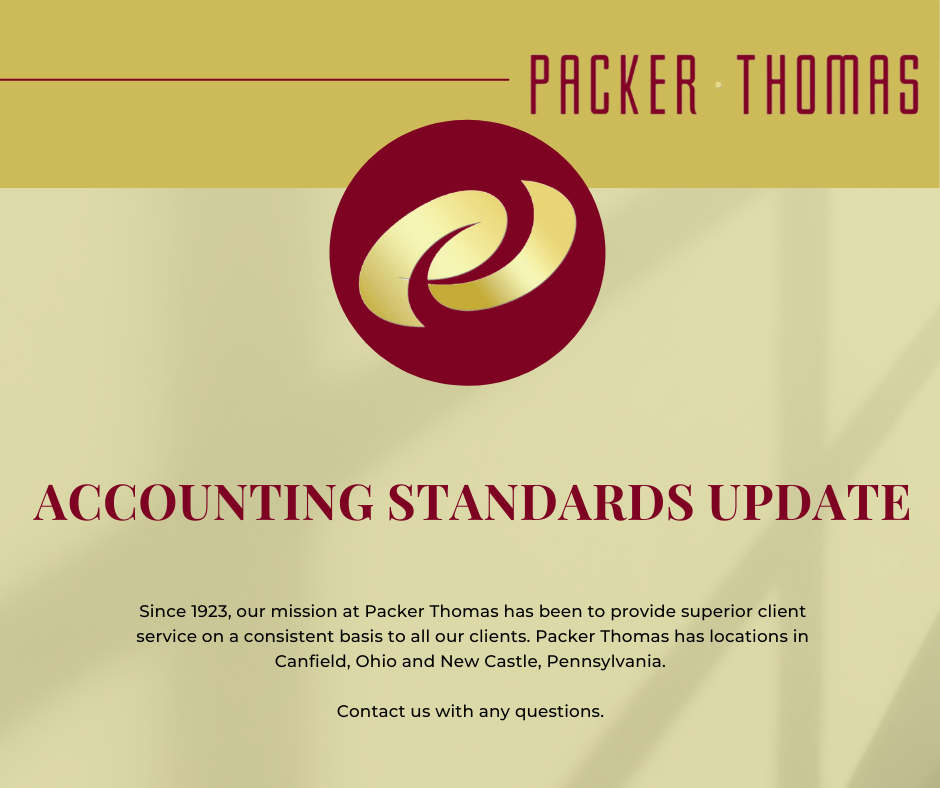
Outsourcing the CFO Role
Why should a business rely on an outside advisor to fulfill all or part of the role of the chief financial officer?

Why should a business rely on an outside advisor to fulfill all or part of the role of the chief financial officer?

Is it time to upgrade your accounting system? Timely financial data is key to making informed business decisions. But getting what you want from your current system, when you want it, may not always be easy or even feasible. The software that worked for your company years ago may not be the optimal choice today. When deciding whether to upgrade, look beyond cost and consider such issues as remote access, compatibility with other systems and applications, the level of vendor support, and the needs of your team. If you’re dissatisfied with your current system, we can identify other cost-effective solutions that may better fit your operational needs.

With the COVID-19 pandemic well into its second year and the start of planning for the upcoming audit season, you may have questions about how to evaluate your company’s going concern status. “Going concern” issues arise when it’s probable that the entity won’t be able to meet its obligations within one year after the date the financial statements are issued (or available to be issued). If your business is continuing to struggle in 2021, contact us to discuss management’s going concern assessment and any mitigation plans. We can help you understand potential red flags and how going concern issues may affect your balance sheet and disclosures.

How has the pandemic affected your organization? You might not have considered this question since last year if your organization prepares GAAP financial statements only at year end. Home in on the following 10 areas: 1) revenue recognition and collectability of accounts receivable, 2) government grants, 3) estimates and fair values, 4) investments and financial instruments that qualify for hedge accounting, 5) inventory, 6) property, plant and equipment, 7) goodwill and other intangible assets, 8) deferred tax assets, 9) accrued liabilities, and 10) long-term debt. Contact us to ensure your accounting staff is on track to accurately report pandemic-related effects to stakeholders for 2021.

You received a management letter when your audit team delivered your company’s financial statements in the spring. This letter contains FREE professional advice, based on observations made during audit fieldwork. It communicates internal control deficiencies and may suggest ways to fortify internal control systems, streamline operations and reduce expenses. You probably haven’t had a chance to imp lement your auditor’s suggestions yet. But there’s no time like the present. The write-up for each item in the management letter includes a possible solution or lists alternative approaches. If you’re unsure how to implement a particular suggestion, reach out to your audit team for more information.

A complete set of financial statements contains three reports. First, the income statement shows revenue, expenses and earnings over a given period. It tells whether a company is growing and profitable. Second, the balance sheet tallies the company’s assets, liabilities and net worth to create a snapshot of its financial health. Third, the cash flow statement shows how cash flows in and out of you r company. Typically, cash flows are classified as operating, investing or financing activities. Reading these three reports, together with detailed disclosures at the end of the financial statements, can provide a holistic understanding of your company’s performance.

A few years ago, IRS Revenue Procedure 2018-15 changed the rules regarding not-for-profit restructuring. If you’ve participated in a restructuring in the past, you’ll be relieved to know that you now might only have to report significant organizational changes on your organization’s Form 990. However, you must satisfy certain conditions. For example, your nonprofit must be a 501(3)(c) organization in good standing. Also, the “surviving” organization must carry out the same exempt purpose that the original organization did. Contact us for more information about the rules and how they might apply to your nonprofit.

Your nonprofit’s board is likely made up of volunteers who’ve agreed to serve because they care about your cause. Whether meetings are in-person or virtual, they need to be well-organized and respectful of members’ time. Once a date is set, prepare an agenda with timetables. During the meeting, impose limits on discussions, discourage one or two individuals from dominating conversations and call time when necessary. If members need to think about an issue, postpone decisions to a future date. After the meeting, be sure to research questions that came up and put unresolved items on the next meeting’s agenda.

No nonprofit looks forward to annual audits. But regular maintenance and preparation for an impending audit can make the process less disruptive. We recommend five steps. First, don’t wait until an audit to reconcile accounts; reconcile them monthly or quarterly. Second, collect supporting documents and alert auditors immediately if something’s missing. Third, submit everything on your auditor’s P rovided by Client list by the deadline. Fourth, prepare to explain major variances in account balances compared to previous periods. Finally, review old audit reports to ensure you aren’t repeating past errors. Contact us with questions.

This memorandum offers an overview of the new guidance on accounting for leases in Accounting Standards Updates (ASU) No. 2016‐02, Leases (Topic 842). In February 2016, the FASB issued ASU No. 2016‐02, Leases (Topic 842). This ASU supersedes the guidance in Topic 840, Leases, and introduces a new Topic 842, Leases. The new topic primarily addresses the criticisms of existing leasing guidance related to a lessee’s accounting for operating leases. Although lessor accounting is not fundamentally changed as a result of this ASU, some amendments have been made to conform the lessor guidance with the lessee guidance and other areas of GAAP
Your company is unique, and we may not be able to answer your specific questions within a blog post. Contact us and let our experts find the solution that’s right for you.
Packer Thomas Certified Public Accountants & Business Consultants.